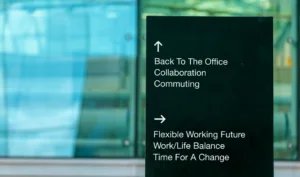
Talent Calibration Can Rise Above Politics. But How?
Are you involved in your organization’s talent calibration process? Think back to the last session you attended with executives. Did they mostly stay quiet? Perhaps

Are you involved in your organization’s talent calibration process? Think back to the last session you attended with executives. Did they mostly stay quiet? Perhaps

Diversity, Equity, and Inclusion (DEI) is by definition a people-centered business endeavor. So at first glance, the phrase “people-first DEI” may seem redundant. But that’s

In today’s ever-shifting talent landscape, companies large and small are searching for more effective ways to attract, recognize, and retain their workforce. These opportunities come

A strong internal communications function is essential for every company, both culturally and operationally. It helps keep employees aware of relevant news and updates, excited

In today’s fluid, fiercely competitive business environment, many organizations continuously strive to stay ahead of the curve. They know success requires an ongoing commitment to

If you lead a business of any kind, it’s essential to understand the factors that influence employee satisfaction in your organization. This kind of insight

“Culture eats strategy for breakfast.” This quote is perhaps one of the most familiar business phrases of all time. Yet, while most leaders agree on

The world of work is a little rough these days, to say the least. Companies large and small continue to scramble in the face of

For most office-based employees, “work” no longer represents a physical location. In fact, 84% of people who worked remotely during the pandemic said they intended

Faced with increasingly turbulent economic times, businesses are rapidly learning the importance of strong leadership. The world has had enough problems dealing with the Covid-19

Long before the pandemic, many organizations struggled with employee engagement. But now, it’s an even tougher hill to climb. Hybrid and remote work have become

Data has percolated into every area of business — from the hiring process, to marketing programs, to charting a company’s strategy for the future. In

For more than two years, employees have slowly — and sometimes reluctantly — returned to their workplaces. Leaders have been trying to instill a sense

Why Focus on Psychological Safety? Successful organizations create conditions that help team members perform effectively, solve complex problems in innovative ways, and feel a sense

Sponsored by The Culture Platform At some point in the last 20 years, companies started to believe employee engagement should define a manager’s role. And

We may or may not be heading for an economic downturn this year, but we certainly are seeing a slew of layoffs. The technology industry

Three years ago, the pandemic lockdown triggered a wave of relentless workplace change. Over time, we’ve all had to revamp our attitudes, expectations and behaviors

The Problem Can you confidently say that 100% of your employees feel safe at work? For business and HR leaders, ensuring the health and safety

At what point in a career does learning stop? Hopefully, never! Most business and technical professionals realize that becoming proficient in a job and becoming

Sponsored by Social Flowers What a difference three years can make! I’m sure that’s what many remote employees are thinking these days. Before the pandemic,

“Absence makes the heart grow fonder.” No doubt, you’ve heard this familiar quote. You may even have said it to encourage others who are separated

Running a business from home can be an exhilarating and highly rewarding experience. But remote business owners know that leading from a home office also

Work Norms Are Changing In 2019, about nine million U.S. civilians worked from home on a regular basis. Then the pandemic arrived. Nearly overnight, remote

We don’t need research to tell us the future of work will be much different from pre-pandemic norms. But Covid isn’t the cause. Disruption was

When you think about your future within your organization, what do you envision? Do you anticipate moving up through the ranks into a managerial or